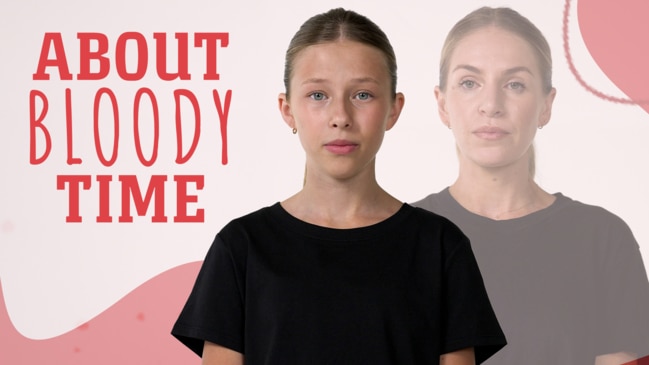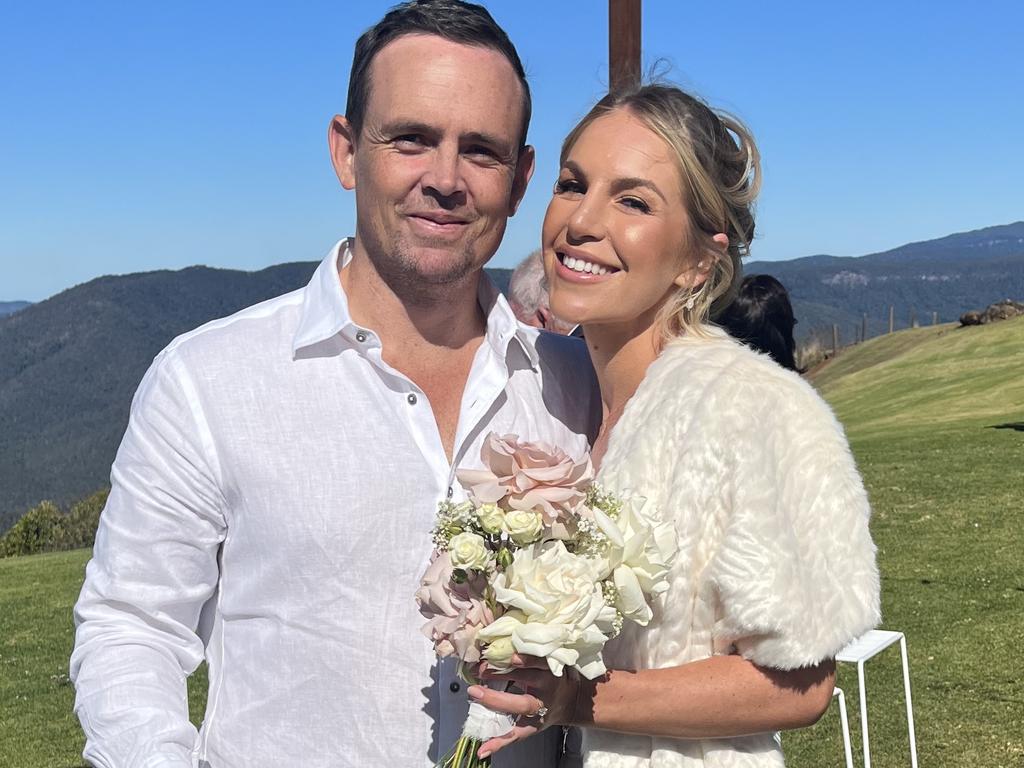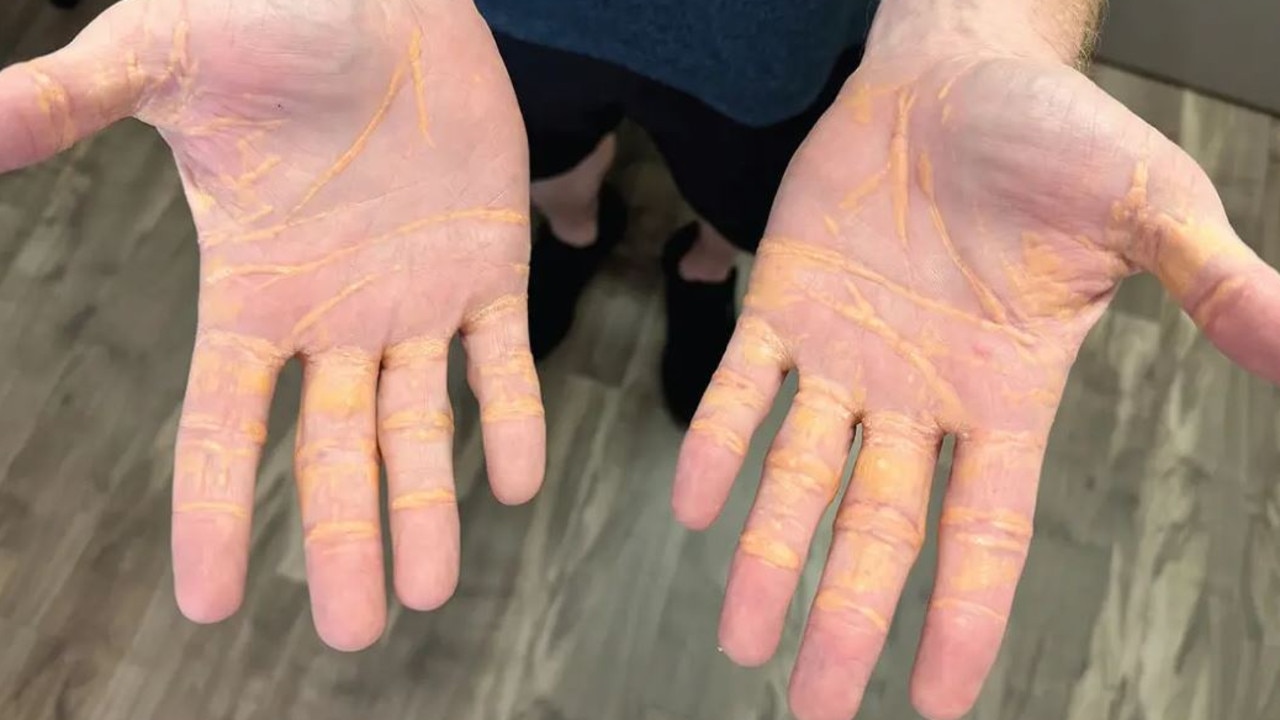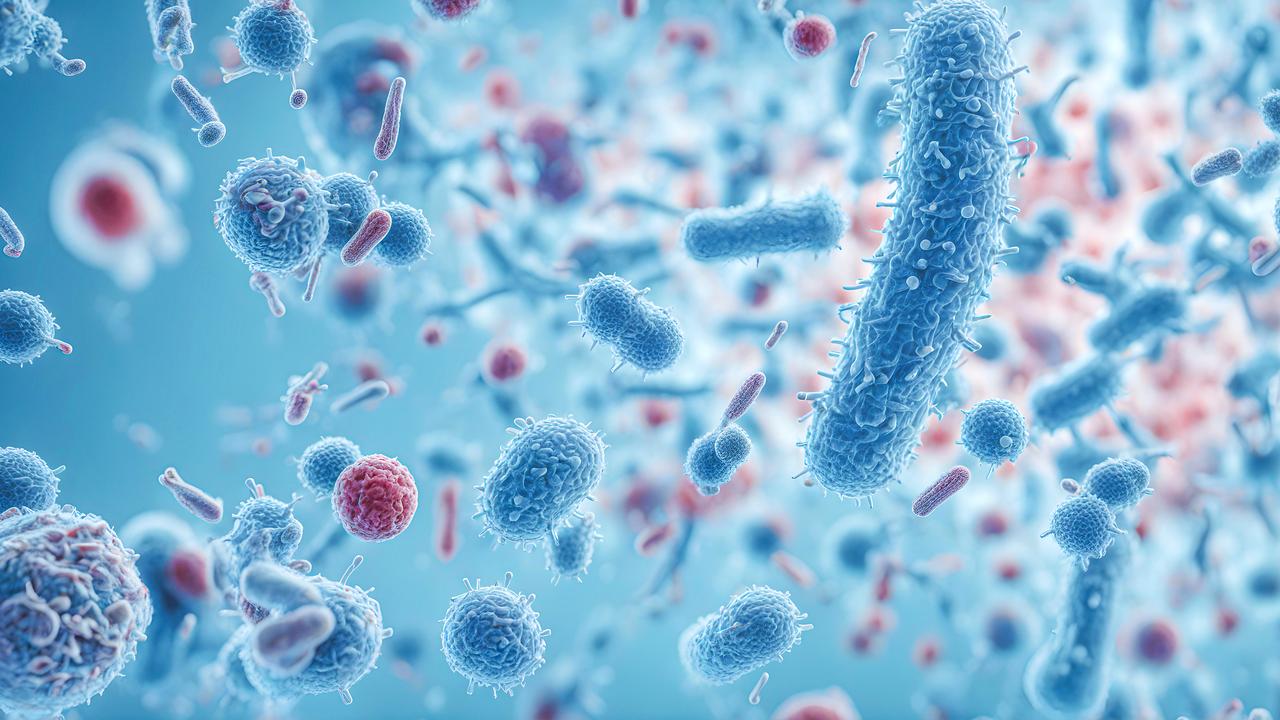Cricketer Steve O’Keefe reveals worrying pre-game call from fiancee
Australian cricketer Steve O’Keefe has revealed the frightening call he received from his soon-to-be wife while preparing for a huge game.

A few weeks ago, I answered a worrying call from my fiancee who was howling through the phone.
I was away on the road with the Sydney Sixers, nearing the pointy end of this cricket season for the Big Bash League.
It was around midday on a Friday, and Lexie, my long-term partner, was home alone, curled up in bed and hysterically crying from the pain she was in. She said it felt like her stomach was being ripped out.
Immediately I remembered what happened the last time she was in this much agony from endometriosis. For several straight days, she was waking in the middle of the night feeling like her back was breaking.
One particularly bad night, I was holding her up in the shower, pain so severe it was making her vomit. She was in tears begging for it to stop. It went on for hours.
I don’t know what she would’ve done if I wasn’t there, at the very least, to make her feel supported.
Medicare is failing women and it’s About Bloody Time things changed. Around one million suffer from endometriosis. There is no cure. Help is hard to come by and in rural or regional areas, it’s virtually impossible. We are campaigning for longer, Medicare-funded consultations for endometriosis diagnosis and treatment.
So when I got this call from her, knowing how awful it can get, knowing she can barely walk when the pain hits this hard, I felt helpless. I could only imagine how she felt.
We’d been to the hospital once before when the pain struck to an unbearable point. We waited for three hours in a busy emergency room, and Lex started to question if she was wasting everyone’s time. She questioned whether the pain was all in her head.
We got advised by a doctor to go get a pelvic scan and to keep up the Panadol and Nurofen in the meantime.


A few days later, the scan showed there was a huge amount of fluid in her pelvic region. She’d suffered a burst cyst on her ovary.
The path forward from these instances, which are too frequent, is always an uncertain one.
So, I knew telling her to go back to the hospital, especially when she was by herself, wasn’t going to be the best option. She was just going to have to hang in there, as she does most months.
Endometriosis affects nearly one million Australian women. After getting Lex’s diagnosis in early 2021, I started talking to my mates about it, and have learned many of their partners have it too. I’m convinced there’s a whole lot more women who are dealing with it.

The only way for Lex to numb the pain has been taking strong pain killers.
But having to lean on such medication so frequently has caused its own problems, particularly mentally.
Emergency GPs have sometimes denied her strong medication, insisting Nurofen should help, which leaves her feeling distressed and like she’s not taken seriously.
And even when she does get prescribed them, they force her bed bound for days. She’ll spend the better part of a week dealing with the side effects – the fatigue, the nausea, the loss of appetite – only for her to briefly recover before pain hits again.
There’s also been the emotional toll surrounding the uncertainty of how it’ll affect fertility.
We know we want to have a family one day.
But after her first surgery three years ago, we were both left with many questions.

In a brief follow-up consultation, there wasn’t any indication on whether or not she’d have a hard time conceiving, and she was told to “just come back if you can’t fall pregnant after a year”. It wasn’t the sort of compassionate response you’d hope for when it comes to a matter so personal.
The pain has returned since then, and is worse than it was pre-surgery. We are sure the endometriosis has come back, but we don’t know what kind of damage it’s causing until she goes under again.
Lex works as a journalist for news.com.au, and has been involved in bringing this campaign to the forefront.
I’ve watched her head off to interview other sufferers, sometimes, after she herself weathered another sleepless night with symptoms.
Lexie’s endometriosis is her story to tell. What I’ve witnessed and been there with her for is only a tiny fraction of the pain she’s suffered. So why am I the one sharing my experience?
Aside from the excruciating physical pain and lack of adequate care, Australian women with endometriosis face a massive problem, and that’s being heard.
According to news.com.au’s survey of more than 1700 women with the condition, 54 per cent have had mostly negative experiences when seeking treatment and at some point felt they haven’t been taken seriously. I don’t for a second think my voice lends any more legitimacy or weight to this issue, but it might at least bring it to the attention of a new audience.
After hearing so many stories from friends and colleagues, I felt it necessary men got involved in this conversation publicly too.
It’s About Bloody Time things changed, and maybe if we’re contributing in breaking down the taboo of this condition, more might be done about this silent suffering.
About Bloody Time is an editorial campaign by news.com.au that been developed in collaboration with scientists recommended by the Australian Science Media Centre, and with the support of a grant from the Walkley Foundation’s META Public Interest Journalism fund.






